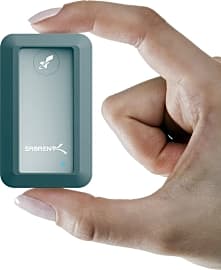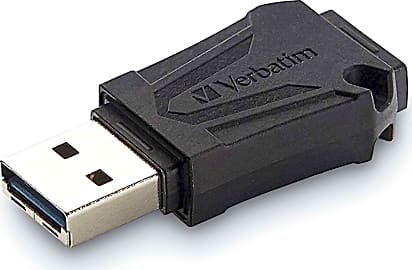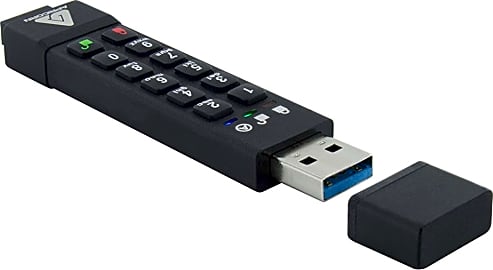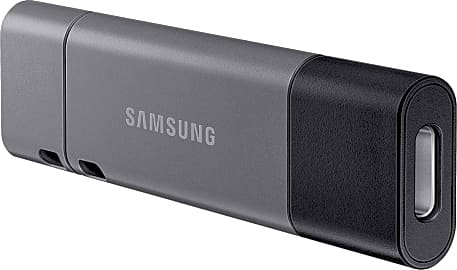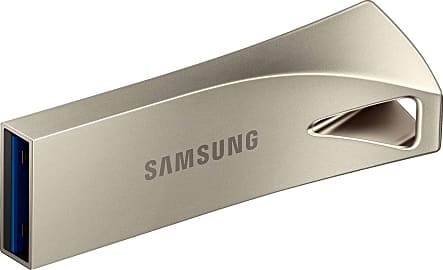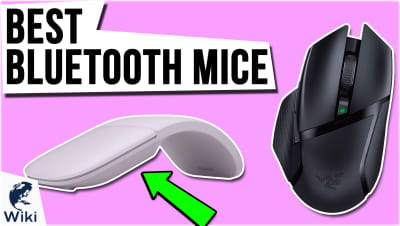The 8 Best Rugged Flash Drives

This wiki has been updated 41 times since it was first published in February of 2016. You don't have to be heading out into the wilderness to do data-intensive research or even be particularly prone to accidents to make good use of one of these rugged flash drives. With durable, reinforced exteriors, speeds and sizes to suit all applications, and price tags to meet any budget, they'll help protect all of your files from drops, water, and dust wherever you decide to take them. When users buy our independently chosen editorial picks, we may earn commissions to help fund the Wiki.
Editor's Notes
December 31, 2020:
For the utmost in security, consider one that has a screw-on cap. The Akooder Jump Drive is relatively unproven but should work just fine, although the Corsair Survivor Stealth has a very solid reputation and should be able to withstand just about anything. The GorillaDrive 3.0 is also known to be of high quality, and although its cap doesn't screw on, it does fit tightly. The Apricorn Aegis is worth considering if you need your data to be as safe digitally as it is physically.
May 31, 2019:
Depending on what you need it for and how much storage you need, there's a plethora of good choices for rugged, portable flash storage. If you need lots of room, Adata, SanDisk, and OWC make great choices that are better-known as external SSDs than thumb drives. In addition to their large capacities, they generally have the advantage of increased transfer rates over their smaller counterparts. The OWC is particularly quick and a great choice for professional videographers, while the SanDisk is on the slower end of the spectrum but is by no means a slouch.
For the utmost in durability, look at either GorillaDrive or the Verbatim ToughMax. They're designed to be essentially impervious to crushing and physical shock, though they don't store as much data as some others. If you're just looking for something stronger than the average thumb drive, check out either model from Samsung. They're attractive and functional and resistant to dangerous elements like moisture and radiation.
While it's somewhat pricey and not altogether the fastest, the Corsair is the best of both worlds. It's only a bit larger than the average thumb-style unit, and it somehow crams in up to an impressive 1 terabyte of storage in its largest model. Finally, the Apricorn is certified to be okay for use with sensitive documents thanks to its military-grade encryption as well as the physical keypad that's just about the only one of its kind.
A Brief History Of Flash Memory
In 1995, Toshiba created SmartMedia, the first NAND-based removable media format.
Flash memory is a non-volatile, solid-state form of transistor-based computer storage. It has no moving parts, unlike traditional hard disk drives, and information contained within it is stored even when the memory chip has an uncharged state. Data on flash memory chips is erased and rewritten electronically.
Japanese engineer Fujio Masuoka invented flash memory while working at Toshiba in the 1980s. At the time, the only electrically erasable programmable read-only memory erased data very slowly, making it impractical. Masuoka developed a form of floating gate technology that could erase and rewrite data much quicker than the current EEPROM and filed a patent for it in 1981. The speed at which Masuoka's newly developed memory could function prompted a colleague of his to suggest the name flash, since he felt it operated at as quickly as the flash of a camera. Masuoka developed both NAND and NOR flash memory and presented his inventions at the Institute of Electrical and Electronics Engineers during the 1987 International Electron Devices Meeting.
Strangely enough, it wasn't Toshiba that went on to capitalize on Masuoka's inventions, but rather Intel. They saw huge potential in high speed flash memory and went on to develop the first commercial NOR flash memory chip in 1988. They chose to develop NOR memory chips rather than NAND chips because of its suitability as a replacement for the ROM memory chips of the time. NOR-based flash memory can access full address and data buses at the byte level, whereas NAND memory, while being cheaper and quicker, can only read and erase data at the block level. In 1995, Toshiba created SmartMedia, the first NAND-based removable media format. SmartMedia is the precursor of all the common flash memory devices we use today, such as SD cards and USB drives.
What Makes A Flash Drive Rugged?
The memory inside of a rugged flash drive is no different than the NAND memory found in any other USB drive, it is what surrounds that memory that makes the difference. In order to be considered a rugged flash drive, the USB device must, at a bare minimum, be shock-, dust-, and water-resistant, though some companies take this a step further and manufacture fully waterproof drives.
Most rugged flash drives will also have some sort of end cap that protects the connector when it is not plugged into a computer.
To increase a flash drive's impact-, dust-, and water-resistance, manufacturers will coat them with some form of rubber silicone or aircraft-grade aluminum, oftentimes a combination of the two. The rubber helps to absorb shock from impacts, while the aluminum provides a near impenetrable surrounding that prevents the memory chips from being dented or punctured. The rubber coating also creates a seal to keep out water, dust, and dirt. Most rugged flash drives will also have some sort of end cap that protects the connector when it is not plugged into a computer.
Many rugged flash drives can withstand extreme temperatures and pressure, too. This means you can take one along on nearly any expedition, from diving in frigid waters to hiking across desert trails, with no adverse effect on the flash drive or the information it contains.
Since most people use flash memory drives in situations where they may be lost or stolen, many offer some form of data security, usually software capable of automatic 256-bit AES encryption. This form of encryption allows you to create a password that users must input to access data on the drive. Some even feature a data self-destruct feature that will automatically destroy your sensitive data if the device is brute-force hacked.
Another common theme of rugged flash drives is some type of integrated attachment point. This may be a carabiner clip or keychain loop that makes them easy to take on the go, while simultaneously reducing the possibility of loss.
Do You Really Need To Stop A USB Flash Drive Before Unplugging It?
Anyone who has ever unplugged a USB device without first taking the proper steps has probably been presented with that harsh-sounding warning ding from their Windows device. To correctly remove a USB memory drive, you must first right-click on the device and then choose Safely Remove Hardware from the pop-up menu, but is this really necessary? Is there a possibility of damaging the drive or your computer by not doing so?
This is because unplugging a flash memory device your PC is currently writing information to can result in data corruption.
The answer is, it depends. You will never damage your computer, but there is a possibility of damaging the USB flash drive. In theory, the main reason it is recommended to properly stop a USB device using the system tray menu is that it allows the computer a chance to check if the drive is currently in use before you unplug it. This is because unplugging a flash memory device your PC is currently writing information to can result in data corruption. Not only could you potentially lose all of your data, but you may even damage the drive itself. While this is rare, it is known to happen.
Now, if you were to wait until your PC has stopped writing new information to the device, and then unplugged it without first stopping it using a command in the system tray, the chances of your damaging the device or losing any data is extremely unlikely. This means that unplugging peripheral devices, like printers and mice, without first using the Safely Remove Hardware command isn't absolutely necessary. However, you may experience a situation where your PC may not immediately recognize the device when you plug it back in. Luckily, this isn't a long-term problem and waiting just a few seconds before plugging the device back in will almost always solve the problem.
So, it definitely isn't necessary to use the Safely Remove Hardware command before unplugging a USB device if you are sure that your PC is not currently writing to the drive, but it is a good habit to get into. In the worst case scenario, you have spent a few extra seconds performing a useless task, the best case scenario, you have saved your valuable data and your flash drive.



